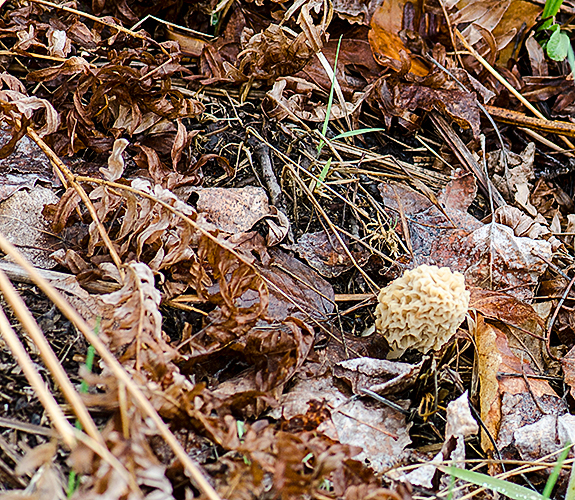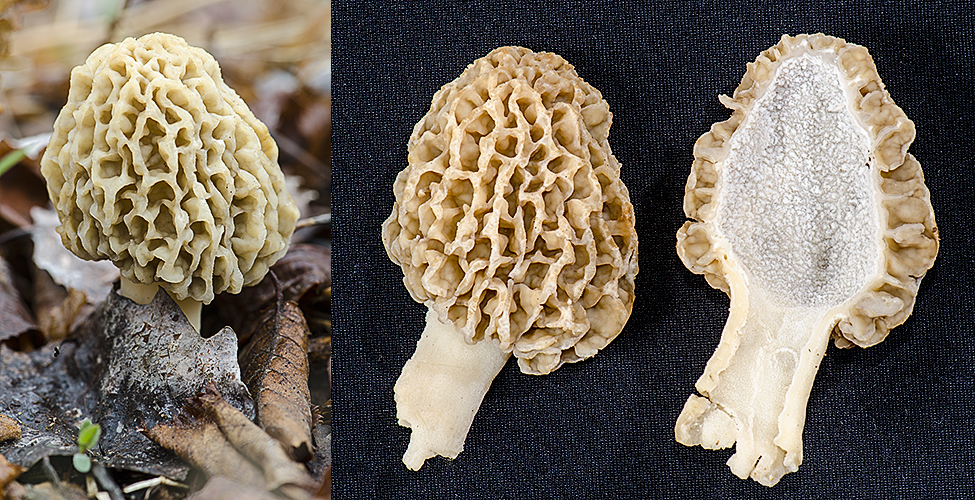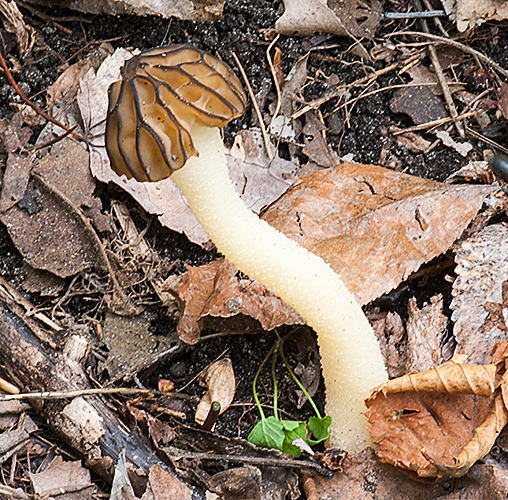First, do not identify morels solely from information on this blog. It is best to learn them from an experienced collector of mushrooms or by going to one of the Morel festivals. Two good guides are A Morel Hunter’s Companion: A Guide to True and False Morels,” by Nancy Smith Weber and James A. Weber. It is a Thunder Bay Press publication. Also, May is Morel Month in Michigan by Heather Hallen, Tom Volk, and Gerard Adams is a Michigan State Extension Publication available on line.
As with any wild food, the first time you eat it you should keep an uncooked sample. Some people are allergic to an otherwise non-poisonous plant. Peanuts are not poisonous but many people cannot eat them. Caution is always needed when eating wild foods. Never eat a raw wild mushroom.
True Morels have a hollow stem and cap. The cap is pitted and the lower edge is joined to the stem in most species. In Half-free Morels the stem attaches to the cap about a third of the way up the cap.
False Morels often have a stem that is filled with fine cotton-like structures. The stem and cap join at the top. False Morels have wrinkled caps. They are poisonous.
Michigan has three main true morel species. Common Morel, Yellow Morel and Gray Morel are all common names for Morchella esculenta. This might be a complex composed of several species. M. crassipes is sometimes split from it. See the webpage Morels of the Upper Peninsula of Michigan. I do not have enough experience with this species to have an opinion as to its validity. I found Common Morel last weekend (May 9th) northeast of Grayling, Michigan. It was in an Aspen stand. This species appears when the White Trillium (Trillium grandiflora) is flowering.
Common Morel varies in color from a pale, dirty yellow to gray. It is normally 5 to 15cm (2 to 6 inches) tall but much larger individuals are known. Its cap ridges are the same color as the bottom of its pits.
Black Morel (M. elata) normally has a narrow, more pointed cap. Its cap pits are lighter than their ridges, at least when they are mature. I often find Black Morels on higher ground in White Cedar (Thuja) swamps. It must be a location that dries out in the summer. Also I find them under Wild Black Cherries (Prunus serotina).
Half-free Morel (M. semilbra) is our smallest true Morel. The other true Morel species have the cap fused with the stem for most of the caps length. Half-free Morels have their caps fused for only the top portion.
Now is the time of year to go looking for morels. Have fun, but be careful. Happy hunting.
Copyright 2015 by Donald Drife
Webpage Michigan Nature Guy
Follow MichiganNatureGuy on Facebook




